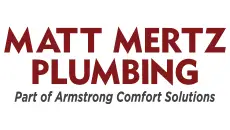Plumbing Installation

Plumbing installation is a complex and crucial process that involves the design, placement, and connection of various components to create a functional and efficient system for water supply, heating, and drainage within a building. This intricate network of pipes, fixtures, valves, and appliances is meticulously designed to ensure the seamless flow of water while adhering to safety and regulatory standards.
Components in a Plumbing Installation
- The Water Supply System is the heart of any plumbing installation. It's responsible for delivering clean and potable water to different areas of the building. The main water supply line, typically connected to the municipal water source or a private well, serves as the primary conduit for water entering the property. The installation includes shut-off valves strategically placed at various points, allowing control over the flow of water to different sections of the building. Pressure regulators are also incorporated to maintain optimal water pressure, preventing damage to pipes and fixtures.
- Pipes form the backbone of the plumbing system, transporting water throughout the building. The choice of pipe material, such as copper, PVC, PEX, or galvanized steel, depends on factors like cost, local building codes, and the specific requirements of the installation. Fittings and connectors, including couplings, elbows, and tees, are used to join pipes and create a network that directs water to various fixtures and appliances.
- Fixtures and Appliances are integral components of plumbing installations, serving specific purposes in different areas of the building. Sinks, faucets, toilets, showers, and water heaters are connected to the water supply system, each requiring specific pipes and fittings. Dishwashers, washing machines, and other appliances may also be integrated into the plumbing system, requiring careful installation to ensure proper functionality.
- The Drainage System, equally vital in plumbing installations, is designed to remove wastewater efficiently. Drainpipes convey used water away from fixtures and appliances, leading it to the sewer or septic system. Traps, typically U-shaped sections of pipe, hold water to prevent sewer gases from entering the building. Vent pipes allow air into the drainage system, maintaining proper pressure and preventing siphoning of water from traps.
- Manifolds are used to distribute water in some installations, particularly those with more modern designs. Manifolds are centralized control points that facilitate individual control over different sections of the plumbing system, allowing for customization and optimization of water distribution.
- A Septic System for properties not connected to a municipal sewer system may be part of the plumbing installation. This includes a septic tank that collects and treats wastewater, a distribution box that directs treated water to the drain field, and a drain field where the water is absorbed and filtered into the soil.
- Gas lines may also be incorporated into plumbing installations to provide fuel for appliances like water heaters, stoves, and furnaces. Proper installation and maintenance of gas lines are essential for safety and compliance with building codes.
- Insulation is another consideration in plumbing installation, especially in cold climates. Insulating pipes helps prevent freezing and ensures the continuous flow of water, safeguarding the system from potential damage.
Plumbing installations are typically carried out by licensed plumbers or plumbing engineers who are well-versed in local codes and regulations. These professionals consider factors such as water demand, fixture requirements, and building specifications to design and implement a system that meets the unique needs of the property. Regular inspections and maintenance are critical to identify and address potential issues, ensuring the long-term functionality and safety of the plumbing installation.

